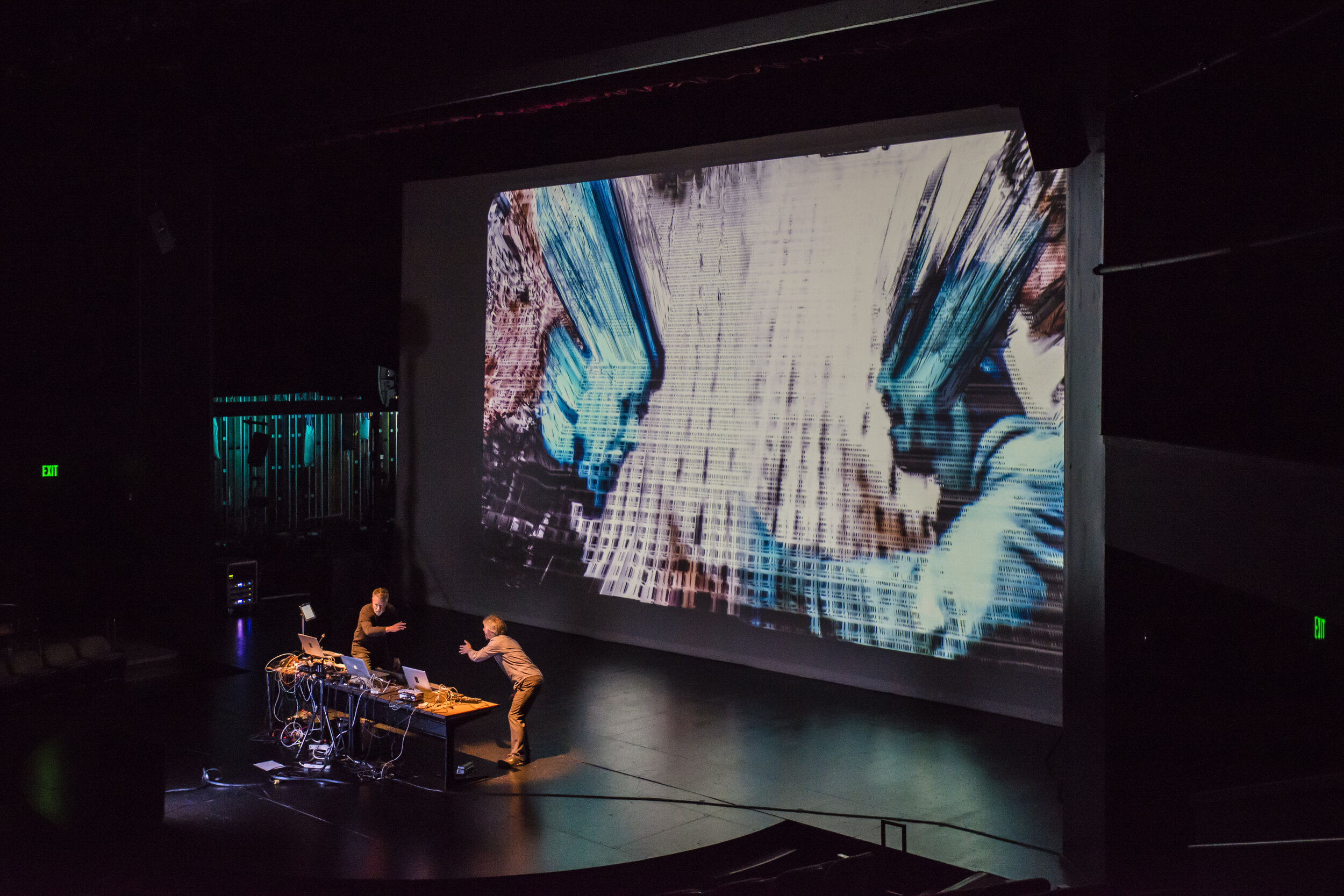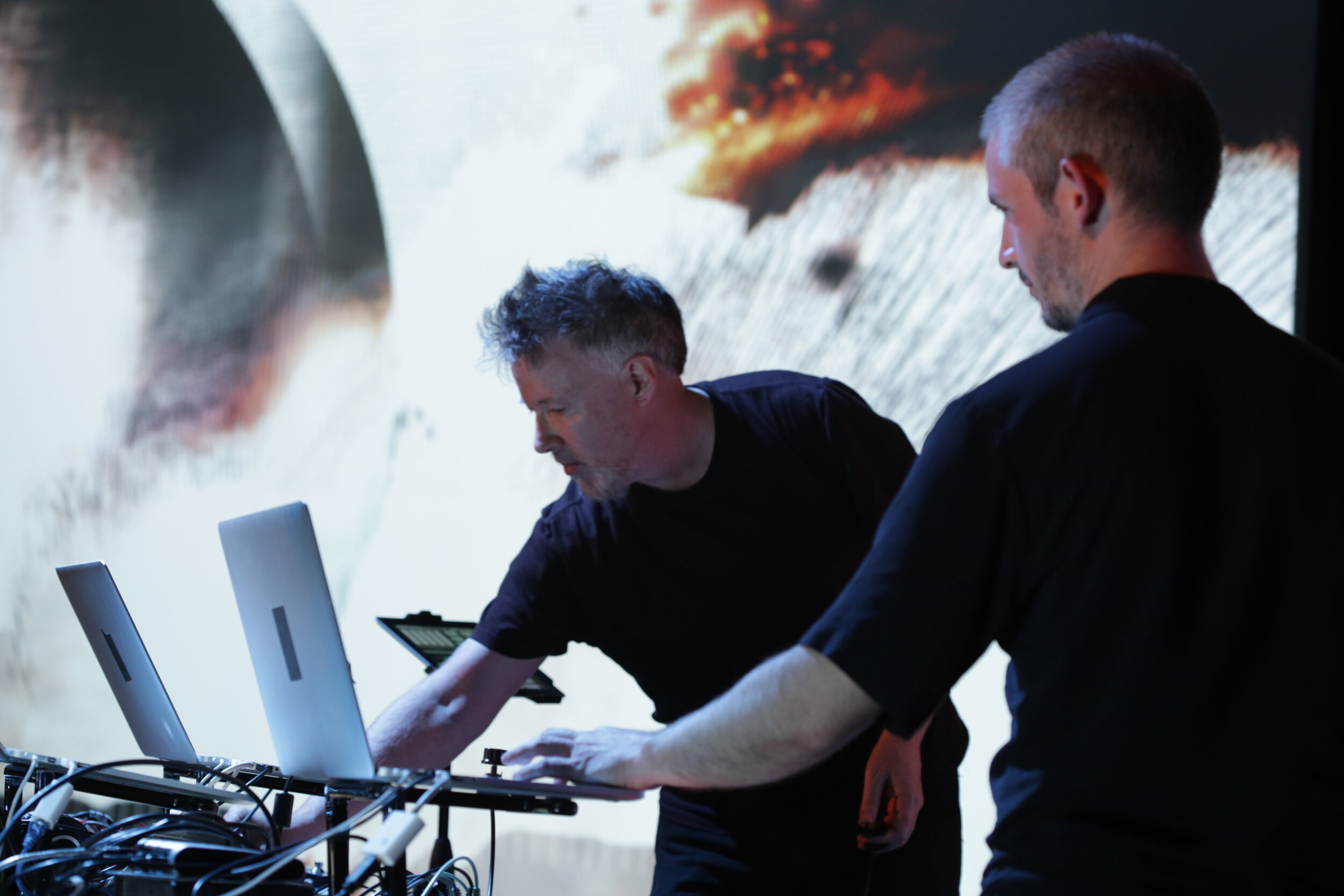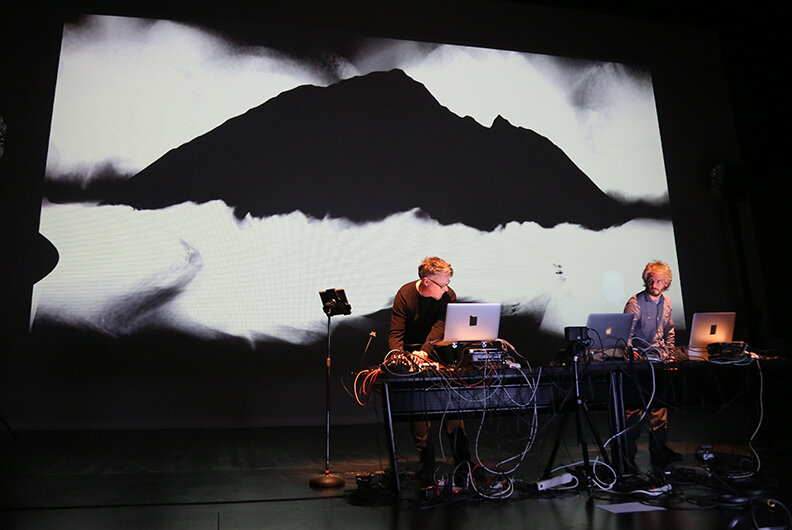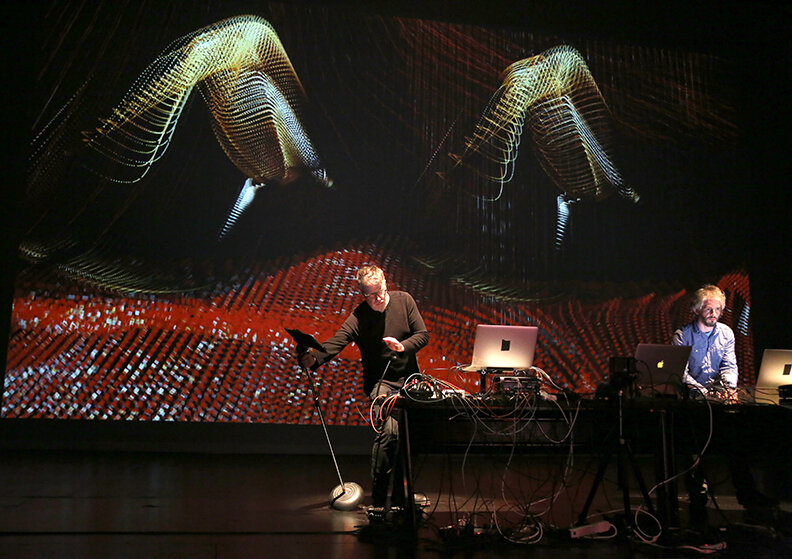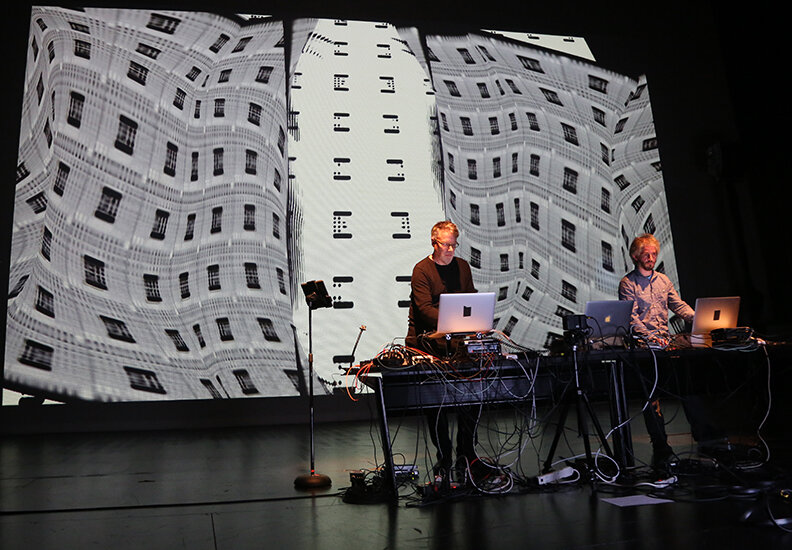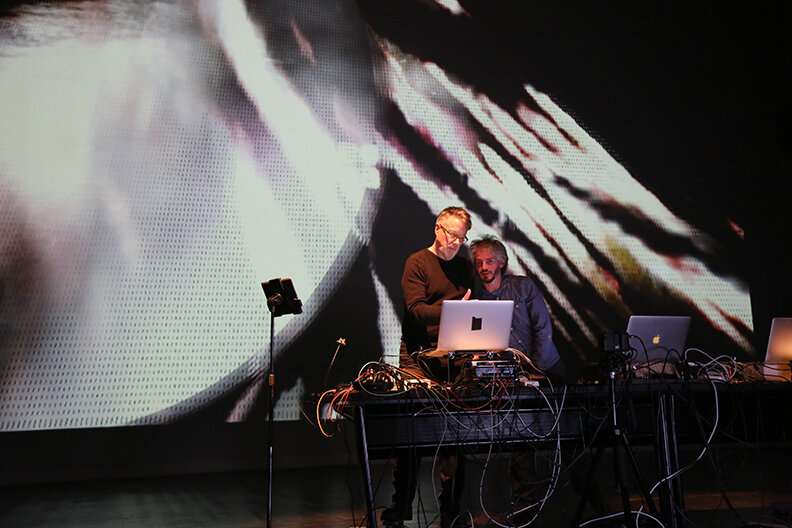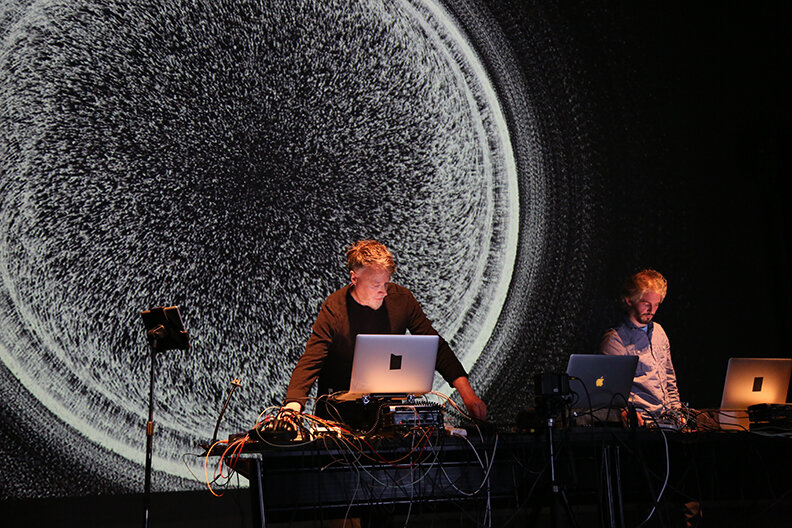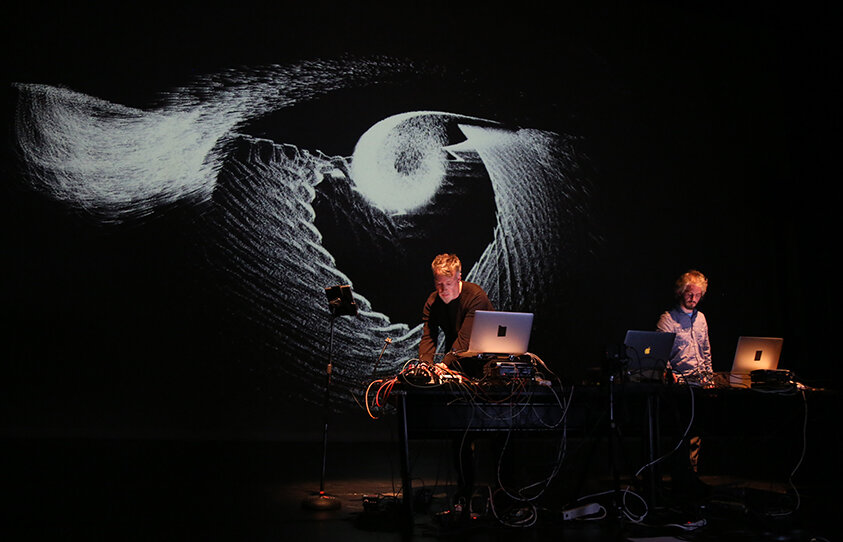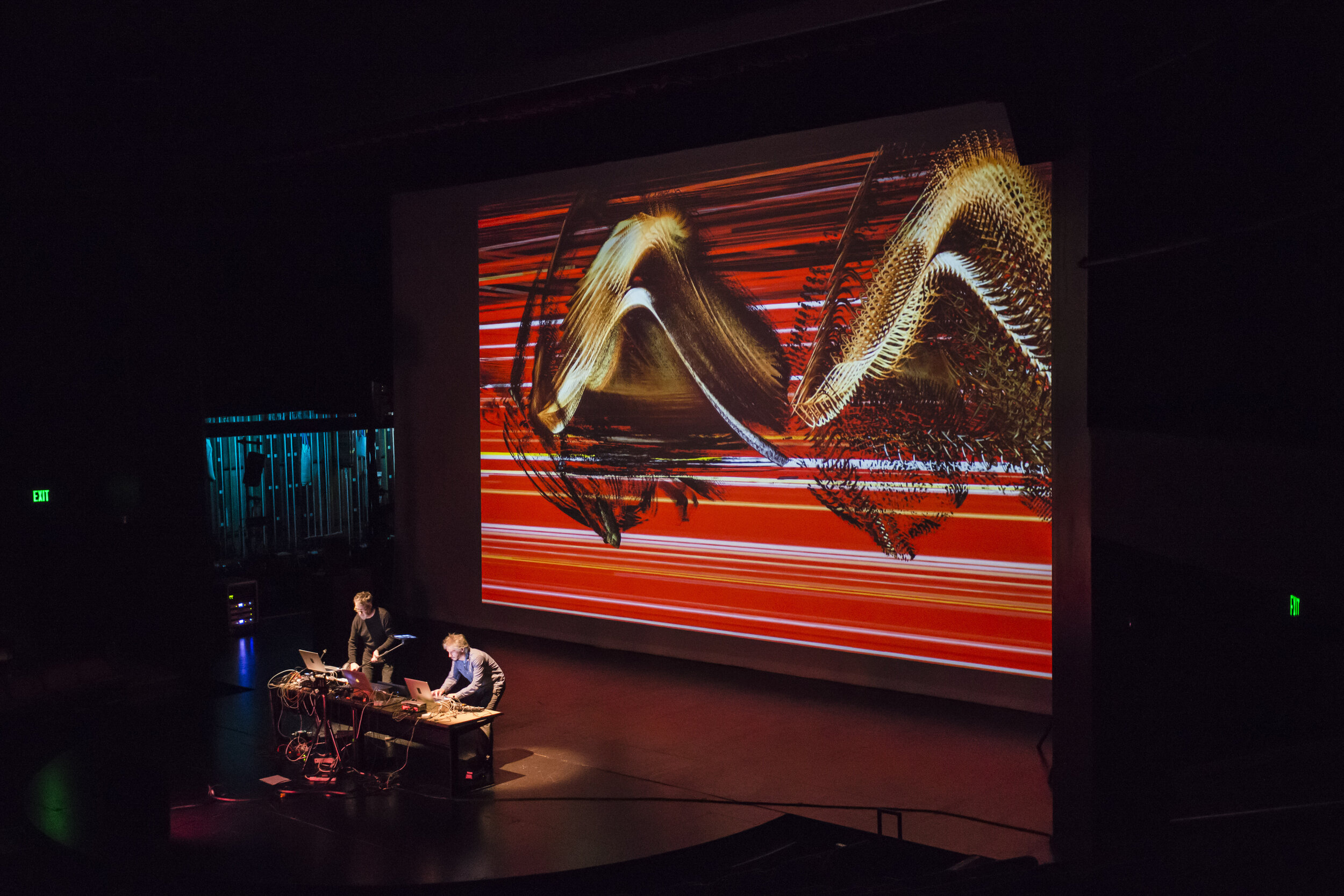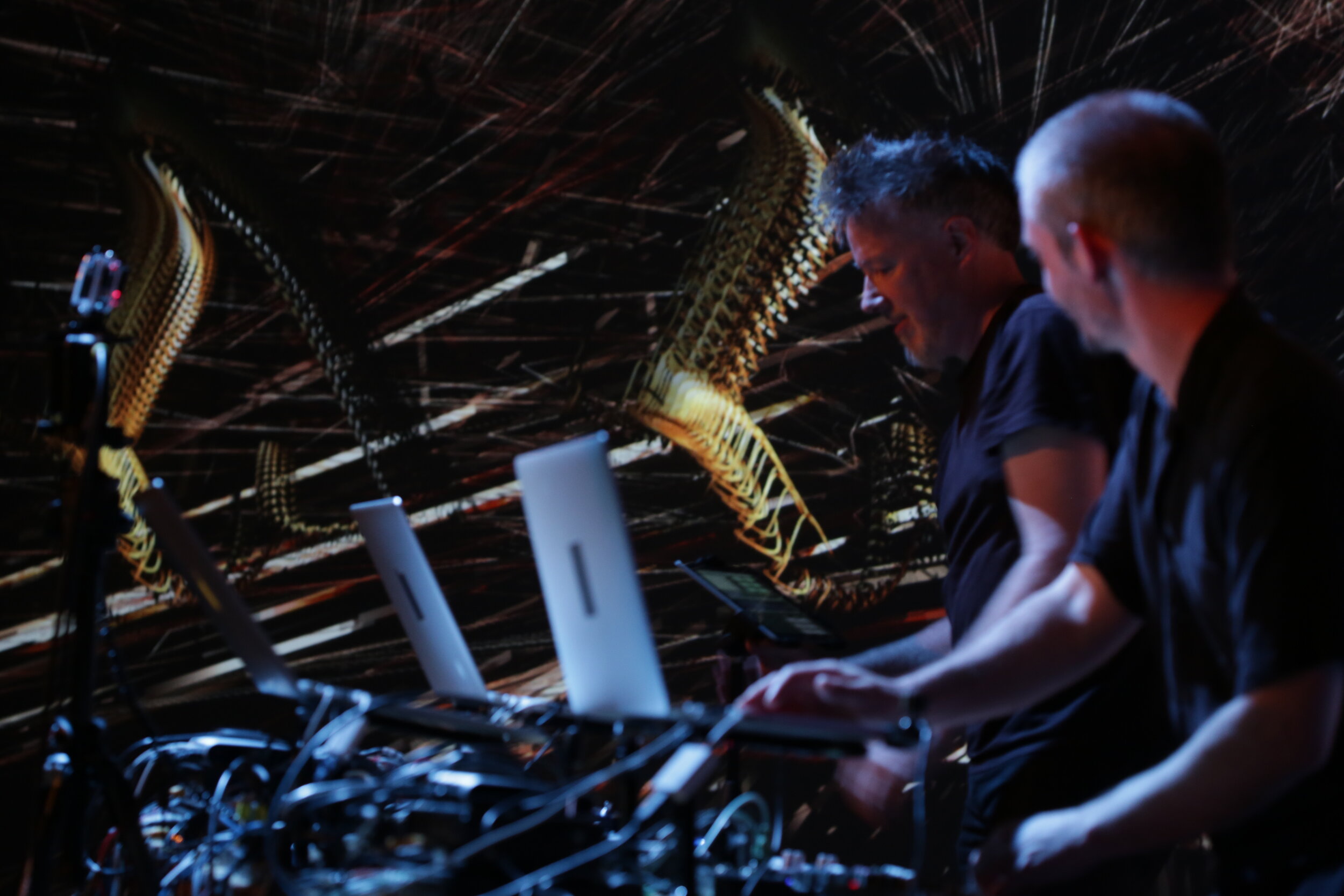Four Directions Home is a live cinema and music performance that explores real-time audio-visual processes to re-imagine, mine and plunder the traditions of landscape painting utilizing unlikely media elements including, system noise, signal glitches, topological displacement and various video sonification techniques. This landscape is both macroscopic and microscopic, earthly and celestial. The “landscape tradition” is often construed as an easy entry into the arts, a kind of aesthetic common denominator bridging culture, class and historical epochs through its depiction of pleasing pastoral vistas, effusive spiritual mythos and familiar surroundings. We can no longer view the landscape solely as a refuge, a pleasantry or as an unending wilderness for the taking, as much of the world as we know it is under siege. In this new transfigured land of strip mines, chemical dumps, deforested expanse and orbiting debris, NoiseFold imagine a different kind of elemental awareness. The familiar perspective, a distant horizon, shudders, rolls and contorts. The soft graphite blush of video noise opens into a chasm, undulating hills convulse in a red pallor and synthetic land masses groan and shoot upward in cataclysmic events. The pastoral and familiar slides away in successive waves of transformation unearthing a cascade of visual quotes from the sensuous modernism of Georgia O'keeffe to early experimental flicker films to the austere grids of Agnes Martin and mysterious icebound expanse of Caspar David Friedrich.
The work does not employ photographic sources or traditionally drawn or painted images but rather explores the “painterly” possibilities of digital generative techniques. The project utilizes the nFolder modular software instrument designed and programmed by the artists. The system integrates audio, video and algorithmic 3D procedures with a gestural sensor interface that allows the performers to directly animate an unfolding visual world utilizing a recombinant database of mathematically generated visual forms. This visual data is also used to produce digital audio waveforms. The effect of this simultaneous process is that the visual forms are seen to produce their own autonomous sounds. The performers then mix these polyphonic sound-streams through a series of parallel electronic signal processes. The instrumental technique is unique in that the performers manipulate the virtual visual objects as a means of “playing” or “sculpting” the sound. The resulting imagery and audio-visual structures are continually reconfigured through recombinant digital folding, 3D visual feedback, morphological extrusion and fractured data shredding.
